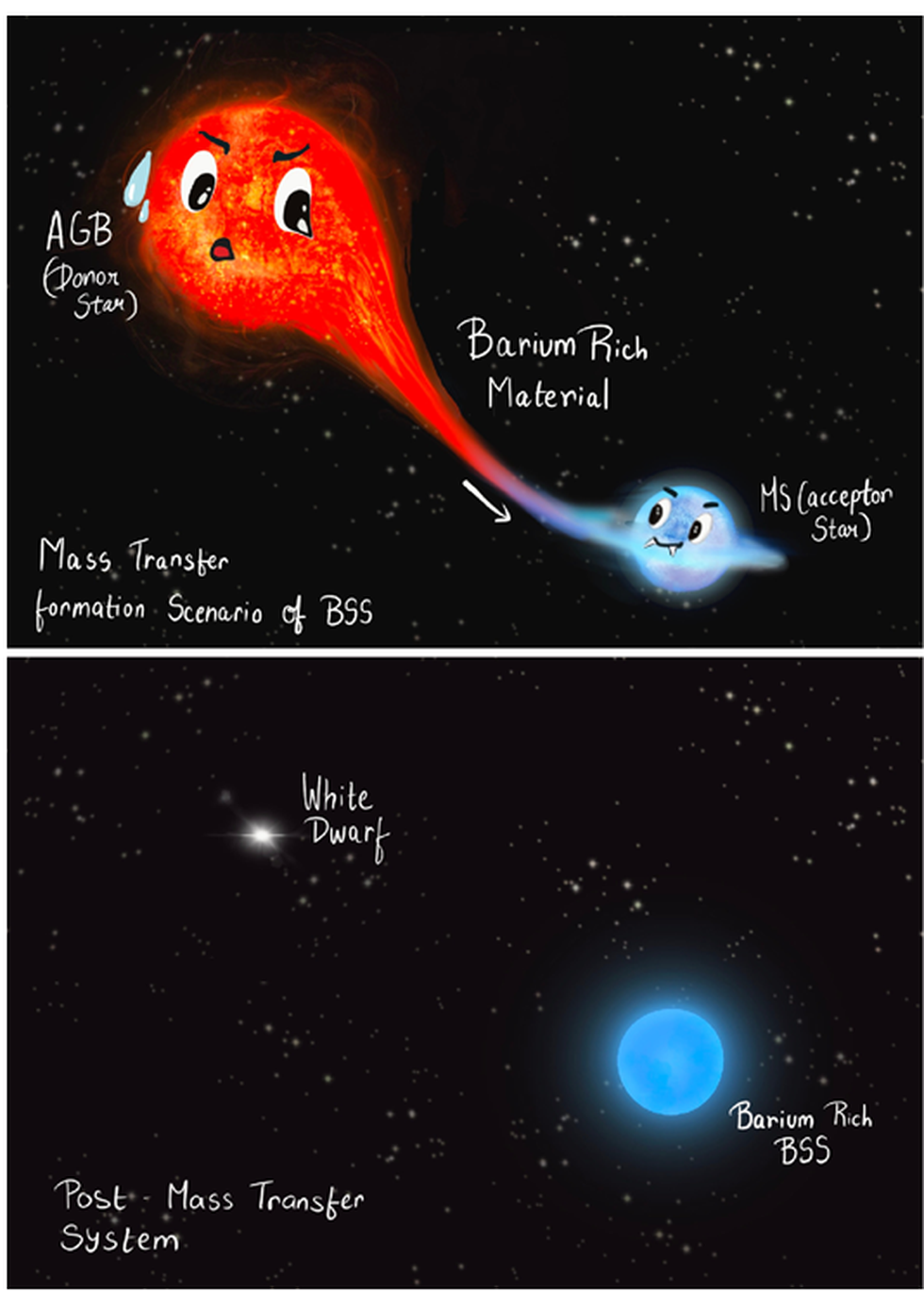About Vampire Stars:
- These are known to astronomers as blue straggler stars (BSS) and are identified easily in star clusters.
- These stars, found in clusters, appear younger than their neighbours, defying simple models of stellar evolution.
- The mystery behind their youthful appearance has long puzzled astronomers, with theories suggesting they might be consuming material from companion stars.
- They are also known as Symbiotic Binaries because they are normally in pairs.
- The Vampire star will start as the smaller star but, nearing the end of the sucking process will inevitably be the larger of the two.
- The sucking star, when it has consumed a large amount from its victim, will become a blue star, also known as a blue straggler.
Highlights of the research
- The scientists studied the surface composition of the vampire star in M67, called WOCS 9005, an open cluster in the constellation Cancer.
- They discovered that WOCS 9005’s atmosphere is unusually rich in heavy elements such as barium, yttrium, and lanthanum. These elements are typically associated with much older, more massive stars in their final stages of life.
- This star is expected to show chemistry very similar to the Sun, but they found that its atmosphere is rich in heavy elements. This chemical anomaly pointed to a fascinating possibility: WOCS 9005 had been “polluted” by material from a companion star.
- Using AstroSat’s Ultraviolet Imaging Telescope (UVIT), they detected significant ultraviolet emissions from WOCS 9005.
- The blue straggler star must have consumed most of this barium-rich material due to its gravitational pull, and is now presenting itself as a rejuvenated star.
